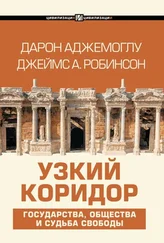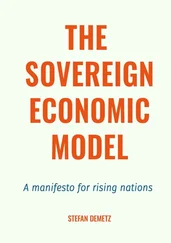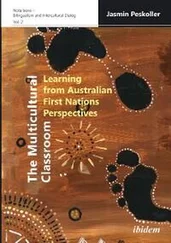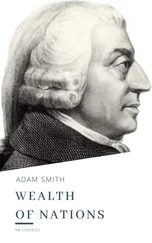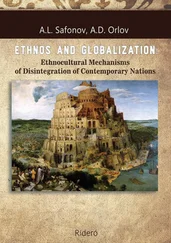THE IRON LAW OF OLIGARCHY
The Solomonic dynasty in Ethiopia lasted until it was overthrown by a military coup in 1974. The coup was led by the Derg, a group of Marxist army officers. The regime that the Derg pitched from power looked like it was frozen in some earlier century, a historical anachronism. The emperor Haile Selassie would start his day by arriving in the courtyard at the Grand Palace, which had been built by Emperor Menelik II in the late nineteenth century. Outside the palace would be a crowd of dignitaries anticipating his arrival, bowing and desperately trying to get his attention. The emperor would hold court in the Audience Hall, sitting on the imperial throne. (Selassie was a small man; so that his legs were not left swinging in the air, it was the job of a special pillow bearer to accompany him wherever he went to make sure there was a suitable pillow to put under his feet. The bearer kept a stock of fifty-two pillows to cope with any situation.) Selassie presided over an extreme set of extractive institutions and ran the country as his own private property, handing out favors and patronage and ruthlessly punishing lack of loyalty. There was no economic development to speak of in Ethiopia under the Solomonic dynasty.
The Derg initially formed out of 108 representatives of different military units from all over the country. The representative of the Third Division in Harar province was a major named Mengistu Haile Mariam. Though in their initial declaration of July 4, 1974, the Derg officers declared their loyalty to the emperor, they soon started to arrest members of the government, testing how much opposition it would create. As they became more confident that the support for Selassie’s regime was hollow, they moved on the emperor himself, arresting him on September 12. Then the executions began. Many politicians at the core of the old regime were swiftly killed. By December, the Derg had declared that Ethiopia was a socialist state. Selassie died, probably murdered, on August 27, 1975. In 1975 the Derg started nationalizing property, including all urban and rural land and most kinds of private property. The increasingly authoritarian behavior of the regime sparked opposition around the country. Large parts of Ethiopia were put together during the European colonial expansion in the late nineteenth and early twentieth centuries by the policies of Emperor Menelik II, the victor of the battle of Adowa, which we encountered before (this page). These included Eritrea and Tigray in the north and the Ogaden in the east. Independence movements in response to the Derg’s ruthless regime emerged in Eritrea and Tigray, while the Somali army invaded the Somali-speaking Ogaden. The Derg itself started to disintegrate and split into factions. Major Mengistu turned out to be the most ruthless and clever of them. By mid-1977 he had eliminated his major opponents and effectively taken charge of the regime, which was saved from collapse only by a huge influx of weapons and troops from the Soviet Union and Cuba later in November of that year.
In 1978 the regime organized a national celebration marking the fourth anniversary of the overthrow of Haile Selassie. By this time Mengistu was the unchallenged leader of the Derg. As his residence, the place from where he would rule Ethiopia, he had chosen Selassie’s Grand Palace, left unoccupied since the monarchy was abolished. At the celebration, he sat on a gilded armchair, just like the emperors of old, watching the parade. Official functions were now held once again at the Grand Palace, with Mengistu sitting on Haile Selassie’s old throne. Mengistu started to compare himself to Emperor Tewodros, who had refounded the Solomonic Dynasty in the mid-nineteenth century after a period of decline.
One of his ministers, Dawit Wolde Giorgis, recalled in his memoir:
At the beginning of the Revolution all of us had utterly rejected anything to do with the past. We would no longer drive cars, or wear suits; neckties were considered criminal. Anything that made you look well-off or bourgeois, anything that smacked of affluence or sophistication, was scorned as part of the old order. Then, around 1978, all that began to change. Gradually materialism became accepted, then required. Designer clothes from the best European tailors were the uniform of all senior government officials and members of the Military Council. We had the best of everything: the best homes, the best cars, the best whiskey, champagne, food. It was a complete reversal of the ideals of the Revolution.
Giorgis also vividly recorded how Mengistu changed once he became sole ruler:
The real Mengistu emerged: vengeful, cruel and authoritarian … Many of us who used to talk to him with hands in our pockets, as if he were one of us, found ourselves standing stiffly to attention, cautiously respectful in his presence. In addressing him we had always used the familiar form of “you,” ante; now we found ourselves switching to the more formal “you,” ersiwo . He moved into a bigger, more lavish office in the Palace of Menelik … He began using the Emperor’s cars … We were supposed to have a revolution of equality; now he had become the new Emperor.
The pattern of vicious circle depicted by the transition between Haile Selassie and Mengistu, or between the British colonial governors of Sierra Leone and Siaka Stevens, is so extreme and at some level so strange that it deserves a special name. As we already mentioned in chapter 4, the German sociologist Robert Michels called it the iron law of oligarchy. The internal logic of oligarchies, and in fact of all hierarchical organizations, is that, argued Michels, they will reproduce themselves not only when the same group is in power, but even when an entirely new group takes control. What Michels did not anticipate perhaps was an echo of Karl Marx’s remark that history repeats itself—the first time as tragedy, the second time as farce.
It is not only that many of the postindependence leaders of Africa moved into the same residences, made use of the same patronage networks, and employed the same ways of manipulating markets and extracting resources as had the colonial regimes and the emperors they replaced; but they also made things worse. It was indeed a farce that the staunchly anticolonial Stevens would be concerned with controlling the same people, the Mende, whom the British had sought to control; that he would rely on the same chiefs whom the British had empowered and then used to control the hinterland; that he would run the economy in the same way, expropriating the farmers with the same marketing boards and controlling the diamonds under a similar monopoly. It was indeed a farce, a very sad farce indeed, that Laurent Kabila, who mobilized an army against Mobutu’s dictatorship with the promise of freeing the people and ending the stifling and impoverishing corruption and repression of Mobutu’s Zaire, would then set up a regime just as corrupt and perhaps even more disastrous. It was certainly farcical that he tried to start a Mobutuesque personality cult aided and abetted by Dominique Sakombi Inongo, previously Mobutu’s minister of information, and that Mobutu’s regime was itself fashioned on patterns of exploitation of the masses that had started more than a century previously with King Leopold’s Congo Free State. It was indeed a farce that the Marxist officer Mengistu would start living in a palace, viewing himself as an emperor, and enriching himself and his entourage just like Haile Selassie and other emperors before him had done.
It was all a farce, but also more tragic than the original tragedy, and not only for the hopes that were dashed. Stevens and Kabila, like many other rulers in Africa, would start murdering their opponents and then innocent citizens. Mengistu and the Derg’s policies would bring recurring famine to Ethiopia’s fertile lands. History was repeating itself, but in a very distorted form. It was a famine in Wollo province in 1973 to which Haile Selassie was apparently indifferent that did so much finally to solidify opposition to his regime. Selassie had at least been only indifferent. Mengistu instead saw famine as a political tool to undermine the strength of his opponents. History was not only farcical and tragic, but also cruel to the citizens of Ethiopia and much of sub-Saharan Africa.
Читать дальше


